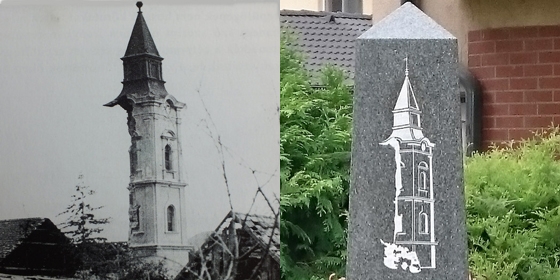Today only one remaining house preserves the memory of the old building complex: the old reformed infirmary premises and the church that were destroyed by a bomb on 2 June 1944.
 The history of the institution that engaged in various diaconal activities, such as caring for the poor, the sick, the orphans and the disabled, dates back to 1529. The deed of foundation from that year contained regulations concerning the running and the maintenance of the charitable house established by László Boncz in his own house in the city centre. After the death of the founder, the institution supervised by the city council operated in two different buildings. The Calvinist townsmen considered it their Christian responsibility to support the home with donations and bequests. In 1704, a Reformed church was erected next to the “outer infirmary” and a new “infirmary pastor” position was created. The charitable house, which was managed by the city and the Reformed church together for two centuries, became a property of the church due to Maria Theresa’s 1752 decree. In 1844, the church established a nursing school for the partly orphaned children living near the Infirmary. In 1914, the church also opened a deaconess motherhouse. The Debrecen Reformed Infirmary laid down the foundations of the present-day social and health care system of the city as one of the country’s oldest social care institutions. Its heritage lives on in the work of the several Reformed diaconal institutions, such as the Immanuel Home that is run by the congregation of the Great Church.
The history of the institution that engaged in various diaconal activities, such as caring for the poor, the sick, the orphans and the disabled, dates back to 1529. The deed of foundation from that year contained regulations concerning the running and the maintenance of the charitable house established by László Boncz in his own house in the city centre. After the death of the founder, the institution supervised by the city council operated in two different buildings. The Calvinist townsmen considered it their Christian responsibility to support the home with donations and bequests. In 1704, a Reformed church was erected next to the “outer infirmary” and a new “infirmary pastor” position was created. The charitable house, which was managed by the city and the Reformed church together for two centuries, became a property of the church due to Maria Theresa’s 1752 decree. In 1844, the church established a nursing school for the partly orphaned children living near the Infirmary. In 1914, the church also opened a deaconess motherhouse. The Debrecen Reformed Infirmary laid down the foundations of the present-day social and health care system of the city as one of the country’s oldest social care institutions. Its heritage lives on in the work of the several Reformed diaconal institutions, such as the Immanuel Home that is run by the congregation of the Great Church.